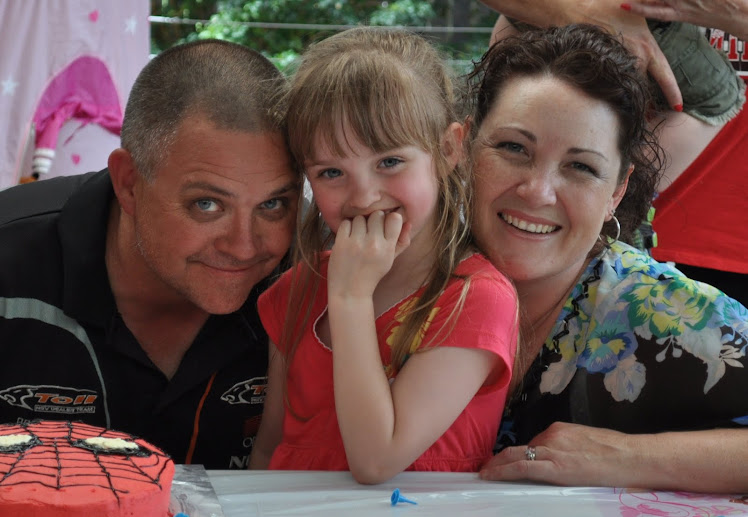We have booked on a 'Town and Mine Tour' today, that is run through the caravan park. We needed to be out at the bus by 8:30am, a stretch for us, but we made it ok. Our driver was 'Rudy', and he has been a miner in Coober Pedy since 1975 coming out from Austria.
 |
| Underground Church |
 |
| The loungeroom of the dugout house we visited |
Coober Pedy was originally known as the Stuart Range Opal Field, named after John McDouall Stuart, who in 1858 was the first European explorer in the area. In 1920 it was re-named Coober Pedy, an anglicised version of Aboriginal words "kupa piti", commonly assumed to mean "white man in a hole".
 |
| Scarlett trying on hard hats |
Nowadays most if not all prospecting shafts are made by using a Calweld-type drill which excavate holes about one metre in diameter using an auger bucket. The drills can dig down to a maximum depth of about 28 to30 metres, where the inland sea many years ago evaporated leaving these precious gems.
 |
| Scarlett Noodling |
We visited the town dump site for waste material (mullock), from the shafts and drives. This was originally lifted to the surface by a hand windlass, but later replaced by power winches (Yorke hoists) or automatic bucket tippers. Today truck-mounted blowers, which operate like vacuum cleaners, are the more commonly way mullock is brought to the surface. We noodled (fossicked) in the piles for about 20min, when Rudy called us back to the bus. The only way we could get Scarlett back on board, was to promise to bring her back here later in the day.
After we returned from our tour and downed a quick lunch, we went to a gallery in town that also serves as a Kangaroo Orphanage/Sanctuary. We joined them for their lunch time feed, where Scarlett got to watch and have a pat of the orphaned kangaroo's.
As promised, we took Scarlett back to the mullock site for some more noodling. After about an hour of crawling around on our hands and knees in the dust, we were rewarded with about 6 small pieces of Opal. Scarlett was so excited, she didn't want to leave, but the day was getting on and Shane was booked in for another tour later that evening so we talked her into returning to the park.
 |
| Opal seam in the old mine |
 |
| Movie relic left from the movie 'Pitch Black' |
 |
| Scarlett at the Kangaroo sanctuary |
 |
| Shane at the Breakaways |
Shane's sunset tour consisted of: We boarded a bus and were immediately taken out to the 'Crocodiles Nest'. This mine site was used as the 'Bartertown' in the movie Mad Max 3; Beyond Thunderdome. We then took a detour through some working mining leases, before heading out to the 'Breakaways'. This area gets its name as looking down from the air, the "Breakaways" appear to be a range of hills that have 'broken away' from the nearby Stuart Ranges. It is in this location that many movies have been filmed, including; Mad max 3; Beyond Thunderdome, Pricsilla; Queen of the Desert, Red Planet, and Pitch Black. After having a look around the "Breakaways", we headed out to the infamous Dog Fence. I took a few photo's of this fence, as it is the longest man made structure ever built. it is even longer than the great Wall of China. After the fence, we moved to another site where we saw the remains of a huge ancient rainforest - estimated to be over 10,000,000 million years old. This is even older than the inland sea that used to be here when dinosaurs roamed the world! We finished the day by watching the sunset over the "Breakaways" - before returning to the caravan park. It was a really great experience, where the photo's just don't do it justice. Sorry! (Shane)
 |
| The Breakaways |
 |
| Dog Fence |
 |
| Sunset |



No comments:
Post a Comment